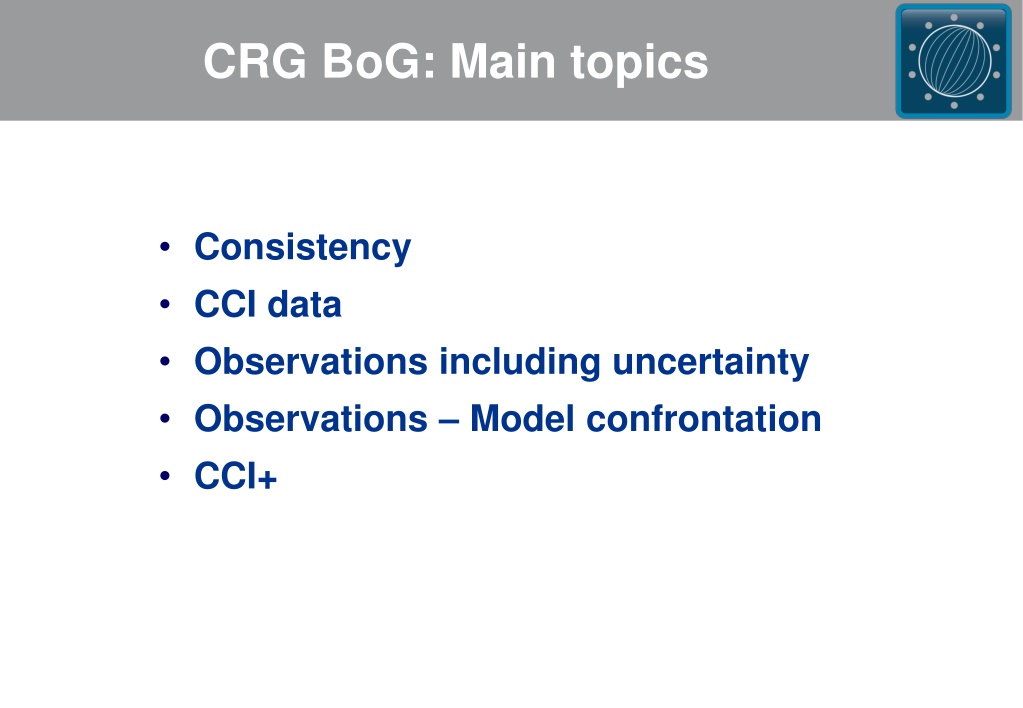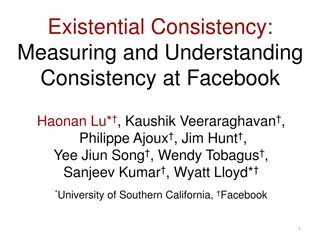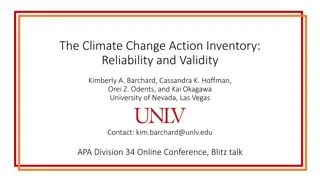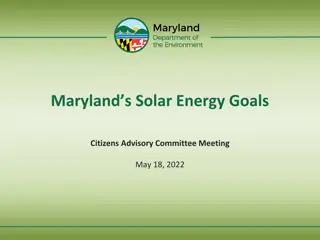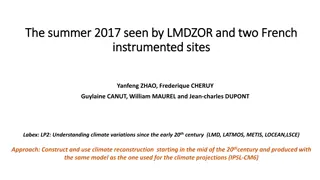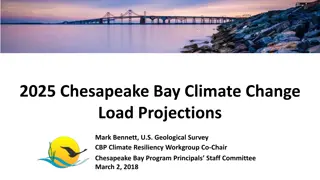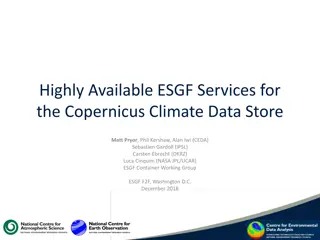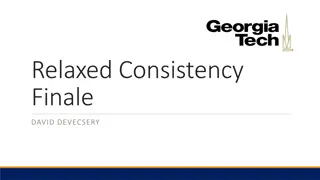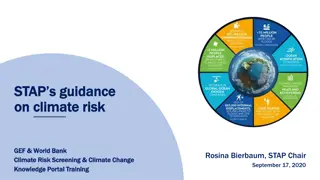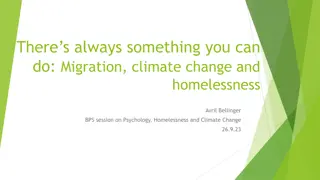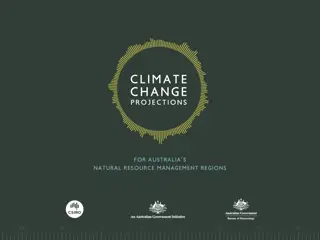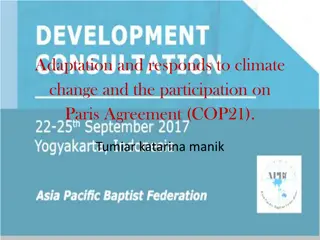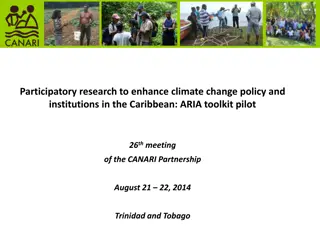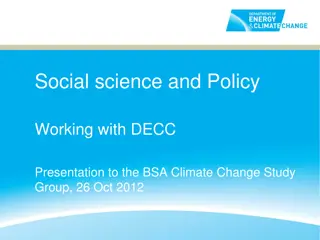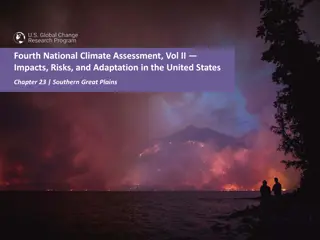Ensuring Consistency and Addressing Data Issues in Climate Change Observations
This content delves into the efforts to maintain consistency among different essential climate variables and related datasets. It discusses interactions with the CCI Data Portal and Toolbox projects, as well as challenges such as data gaps, uncertainty descriptions, and issues with data formats. Strategies to ensure consistency and tackle these issues for improved climate observations are explored.
Download Presentation

Please find below an Image/Link to download the presentation.
The content on the website is provided AS IS for your information and personal use only. It may not be sold, licensed, or shared on other websites without obtaining consent from the author. Download presentation by click this link. If you encounter any issues during the download, it is possible that the publisher has removed the file from their server.
E N D
Presentation Transcript
CRG BoG: Main topics Consistency CCI data Observations including uncertainty Observations Model confrontation CCI+
Attendance Represented CCI teams (besides CMUG): Aerosol Cloud GHG O3 Fire LC Arc. IS SM SST
Consistency Q1: What are you doing to ensure consistency between your ECV and related ones? Cloud: consistency of specific properties to understand processes SM + LC : dialog for comparing results to evaluate consistency SM + GHG : looking at physical relationship (ETH) GHG : combine 4 ECV in data assimilation (GHG, FAPAR, fire, LC) in a model of terrestrial vegetation (proposal as a CCI option) Fire + LC : dialog between the two consortia to check consistency
CCI data (1) Q2: What interactions are you having with the CCI Data Portal project, inc Obs4MIPs? Data are directly recovered from CCI teams A concern: a lost of information when the data is recovered from a mirror of the original data base; could it be a problem for traceability? Obs4MIPs datasets are prepared by the teams, so hopefully this retains the connection with the data producer and available information on data production. The CCI data portal allows the diffusion of updated products.
CCI data (2) Q3: What interactions do you anticipate with the CCI Data Toolbox project? OC had some interaction to add small changes; toolbox seen as useful for users to visualize the data. For the toolbox the traceability is important, e.g. the documentation of the upscaling of a product from one resolution to another should be available. Q4: Any other data issues? (e.g. masks, metadata,...?) NetCDF 4 allows a better compression of data volume compared to NetCDF3 but the issue is for the Obs4MIPs datasets requiring NetCDF3. A few years ago, there was discussion on the Land-Sea mask. It seems not to be a remaining issue.
Observations inc uncertainty Q5: Do you have data gap issues (spatial and temporal continuity)? If so, how do you tackle or plan to tackle them? Temporal mean is a typical example for dealing with missing values; standardize the practice would be good and this is also an issue for the toolbox. For Obs4MIPs, one issue is not knowing the original data coverage. Q6: Do you have issues with uncertainty descriptions of the data? If so, how do you tackle or plan to tackle them? Diagnostics from data assimilation systems allow an analysis of the consistency with the uncertainty estimates. There is a difficulty on how to use the uncertainty information, e.g. when averaging data spatially. But some manuals (OC, others ?) explain how to use the information on uncertainties.
Observation - Model confrontation (1) Q7: Are observation uncertainties used to quantify models variability (using perturbed CCI data as model prognostics such as land cover)? And for validation of models in general? E.g. GHG and SST are producing an ensemble product No known example of application of these ensembles by the CRG for these purposes Q8: Can we anticipate if and how the CCI will/could be used in CMIP6? CCI data will be used trough Obs4MIP EMSValTool is being developed also for the CMIP6, and most CCI data are going to be used there
Observations - Model confrontation (2) Q9: Are the ESM output and observations of the same ECV always calculated in the same way? If not, do we appreciate the differences? In general, in this community differences are mostly known (experience from model/observation comparison and from data assimilation), but it might not always be the case; Some existing sophisticated tools (e.g. COSP) but new developments of such tools dependent of a cost / benefit evaluation Some important remaining issues: for SL, model and observation are often very different (missing terms in models); soil depth associated to SM also different; .
CCI+ Q10: What are your plans (data production, experiments) for CCI+ Nordic countries organising a meeting with delegates from ESA next April Possible extension for Fire and LC: FAPAR, spectral albedo Snow cover is very important for predictability studies; Nordic countries will be comparing different snow products, and perhaps will use data assimilation Possible extension for OC: functional types and OC near the coast accounting for the contamination of the sea by river discharge New products from fluorescence Need to use the potential of Sentinel program
